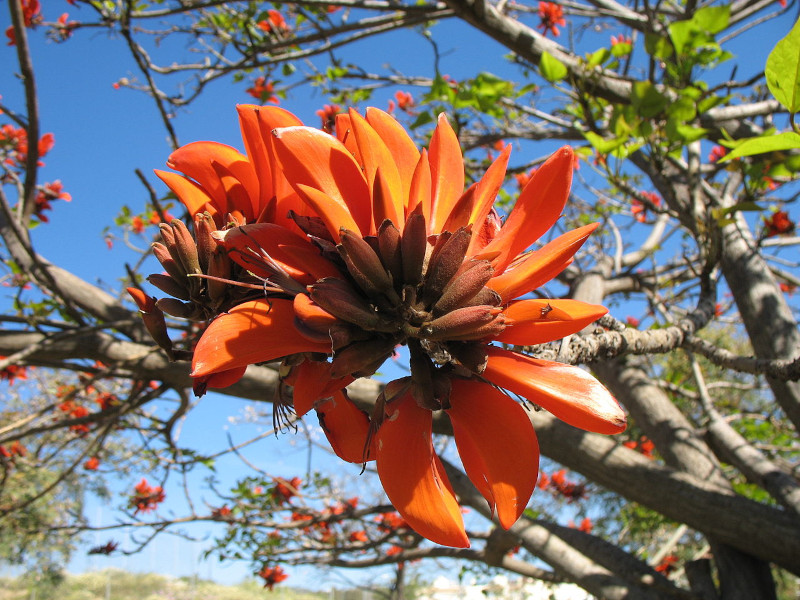Coast Coral Tree Facts
- For starters, the lovely Coast Coral Tree inhabits a very limited habitat range. Yet despite this, the unique plant seems to have a stable population. Therefore, the species does not appear on the IUCN Red List of Threatened Species.
- In addition, the unusual tree has recently become popular as an ornamental plant. As a result, scattered concentrations of the species now exist in other regions, including India and the United States.
- In some parts of its endemic range, the tree also remains rather popular in cultivation, as a source of lumber. Yet this practice remains limited to individuals and does not carry over to commercial use.
- Perhaps the most noteworthy fact about this tree remains the secret it conceals about its own nature. As a result of genome analyses, botanists consider this fascinating species to be a member of the pea family.
Related Species
Coast Coral Tree Physical Description
Experts consider the Coast Coral Tree to be either a medium-sized or large deciduous species. The uncertainty occurs due to the wide range of size at maturity. Matures trees range in height from 15-40 ft (4.6-12.2 m), and the canopy ranges from 12-20 ft (3.6-6.1 m) across.
The trunk stays relatively smooth, yet small thorns do occur occasionally. In addition, each leaf contains three elliptical leaflets.
While its classification ranks it as rather unusual, many consider the flowers to be its most beautiful aspect. Each scarlet red flower contains five petals, and curves slightly backward. Pollination primarily occurs due to the activity of hummingbirds.
Kingdom: Plantae
Phylum: Angiosperms
Class: Eudicots
Order: Fabales
Family: Fabaceae
Genus: Erythrina
Species: E. caffra
Coast Coral Tree Distribution, Habitat, and Ecology
The impressive Coast Coral Tree also only occurs endemically in certain portions of southeastern Africa. In addition, it only grows along the coast, hence the common name. Due to this, 33 mi (53 km) remains the furthest inland any naturally growing tree known occurs.
Its primary habitat consists of rather moderately wooded stream banks in otherwise arid regions. Yet even in these areas, it only appears at altitudes between ranging between sea level and 3,300 ft (1,000 m).
Individual trees typically bloom in late spring to early summer, and while hummingbirds remain the principal pollinator, butterflies also flock to the aromatic blooms in large numbers.
This magnificent perennial also possesses an unusually long taproot for a tree of its size.
Species Sharing Its Range
Check out our other articles on Mountain Chicken, Honey Badger, Blue Chilean Crocus, American Crocodile, Verdon Gorge, European Honey Buzzard, Asian Weaver Ant, Tiger Shark

